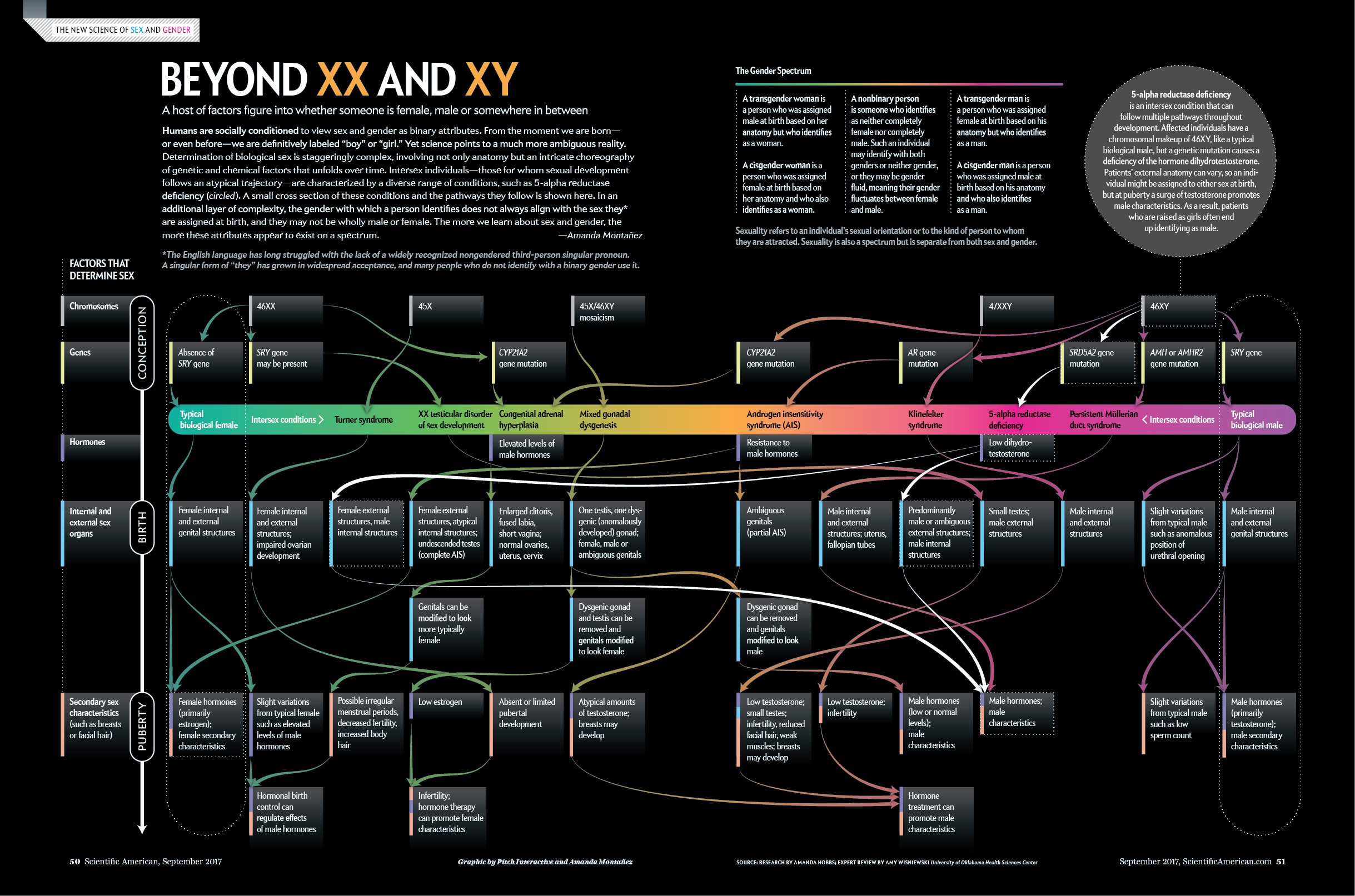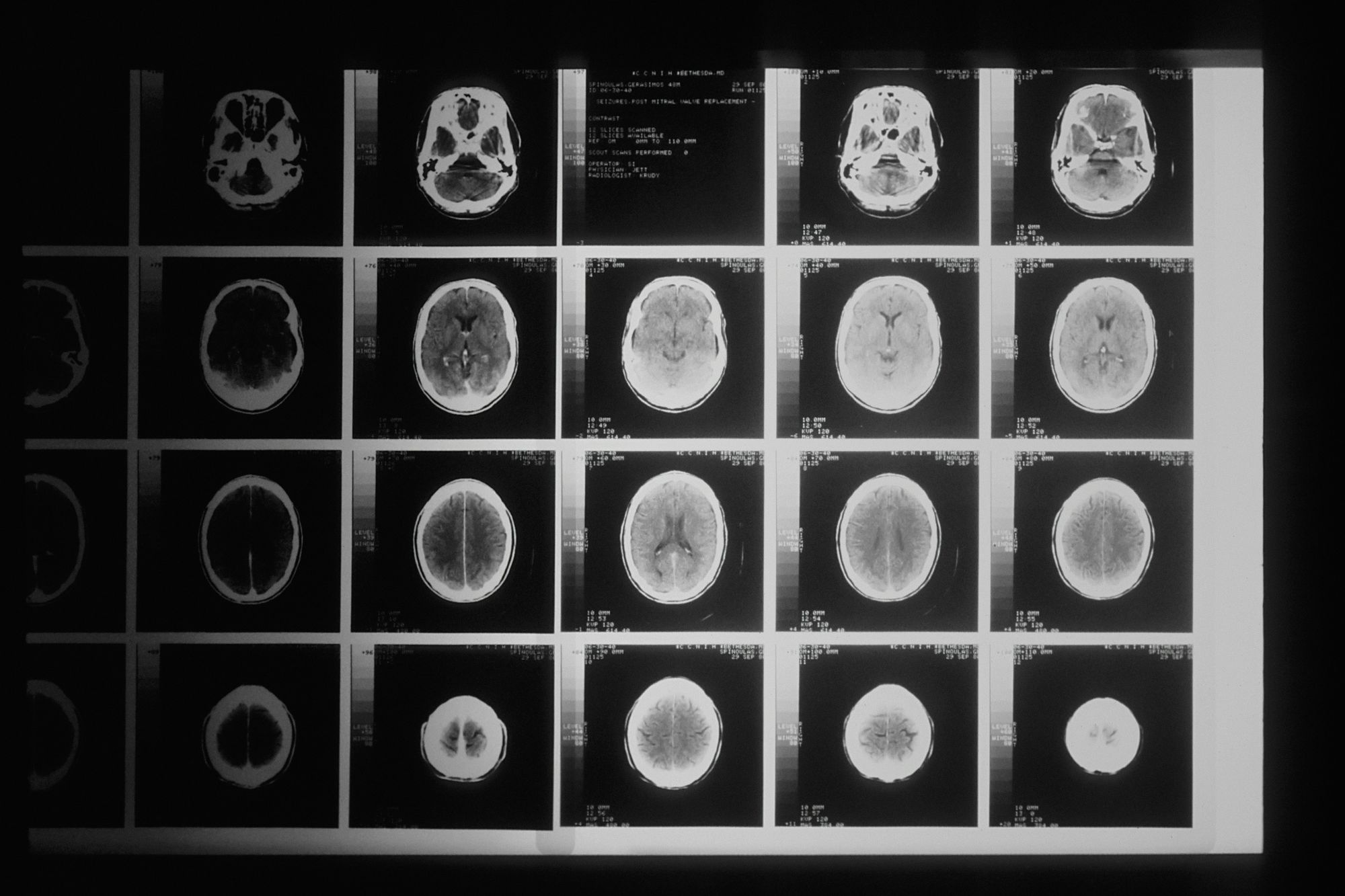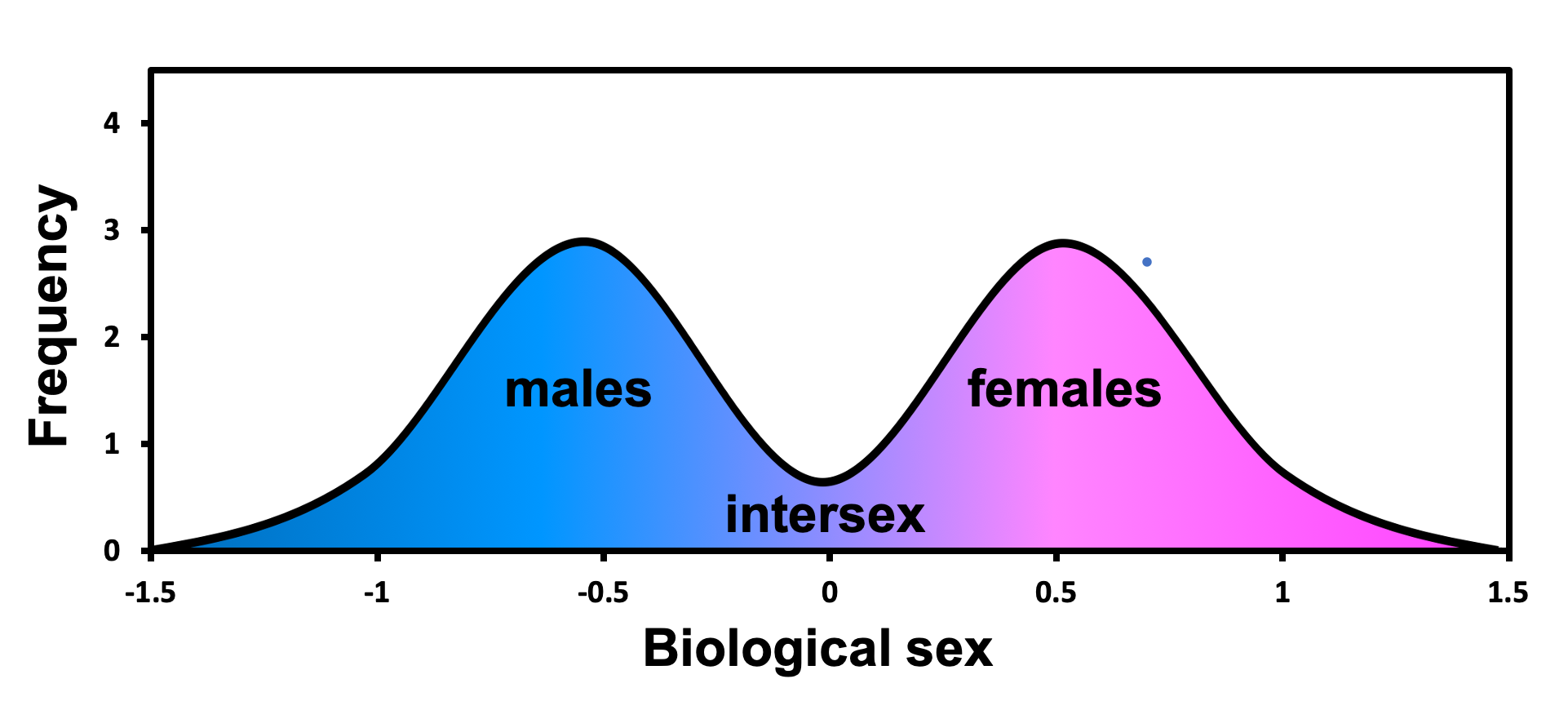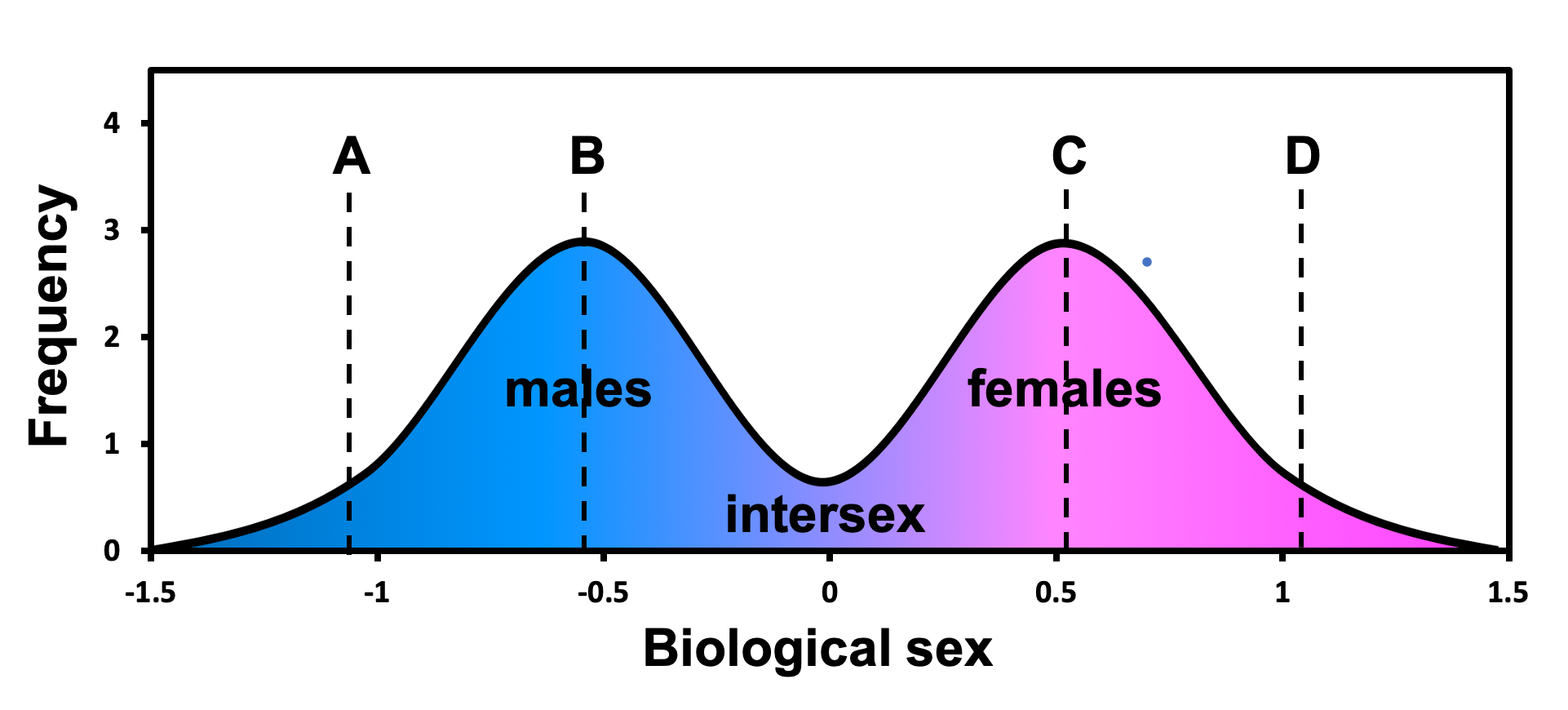Must Reads
JK Rowling Is Right—Sex Is Real and It Is Not a "Spectrum"
Biological sex in humans is a binary system.

JK Rowling recently drew fire on social media for tweeting the statements to the effect that “biological sex is real.” The tweets began when she mocked an opinion piece that used the term “people who menstruate” in place of “women” to account for the fact that transgender men also menstruate, and prefer not to be described as women.
If sex isn’t real, there’s no same-sex attraction. If sex isn’t real, the lived reality of women globally is erased. I know and love trans people, but erasing the concept of sex removes the ability of many to meaningfully discuss their lives. It isn’t hate to speak the truth.
— J.K. Rowling (@jk_rowling) June 6, 2020
The backlash on Twitter has been swift and cacophonous, and headlines have followed. GLAAD, an LGBT advocacy group, issued a response on Twitter, calling Rowling’s tweets “inaccurate and cruel.” One commenter wrote “I know you know this because you have been told over and over and over again, but transgender men can menstruate. Non-binary people menstruate. I, a 37-year old woman with a uterus, have not menstruated in a decade. Women are not defined by their periods.”
Till now, even the most thematically ambitious feminist theorists have acknowledged that sex itself is a real biological phenomenon, and that sexual dimorphism is an important component of human existence as well as human rights. Yet increasingly, such common-sense propositions as JK Rowling’s are now cast as hate speech.
As more and more people refer to themselves as trans, nonbinary, two-spirited, and gender-non-conforming, there’s been a push to realign the objective reality of biological sex to match one’s subjectively experienced gender identity. In the emerging view, the very notion of males and females existing as real biological entities is now seen as obsolete. Instead, some argue, we have only varying degrees of “male-ness” and “female-ness.” And so the very idea of segregating sports (or anything, for that matter) using binary sex categories is seen as illegitimate, since, if no definitive line can be drawn, who’s to say a purported “male” athlete isn’t really female?
The view that sex is a spectrum is not confined to fringe critical theorists. It has made inroads into mainstream culture, thanks in part to a highly sympathetic media environment. Even prestigious scientific journals such as Nature have given space to authors who argue that “the idea of two sexes is simplistic” and that “biologists now think there is a wider spectrum than that.” Another Nature editorial insisted that attempts to classify an individual’s sex using any combination of anatomy and genetics “has no basis in science.” A new book, The Spectrum of Sex: The Science of Male, Female, and Intersex, argues this position from cover to cover. Its publisher, a Canadian academic press, gushes that “this transformative guide completely breaks down our current understanding of biological sex.”
In February of this year I co-authored a Wall Street Journal op-ed on the subject, entitled The Dangerous Denial of Sex. Along with my co-author, developmental biologist Emma Hilton, I highlighted the harms that sex-spectrum pseudoscience can impose on vulnerable groups, including children, women, gay men, and lesbians. Since we were confined to a newspaper op-ed format, Dr. Hilton and I had scant space to explore in detail the actual science of biological sex and the pseudoscience that is sex spectrum ideology. That is the subject of this essay.
* * *
There are two main arguments typically offered in defense of the claim that sex is a non-binary attribute that exists on a “spectrum.” The first is based around the existence of intersex conditions—people with intermediate or indeterminate sex characteristics. This argument claims sex cannot be binary if some individuals have sexual anatomy that appears to fall somewhere between male and female. This argument is frequently illustrated with figures that plot intersex conditions along a continuous axis that ranges from “typical female” to “typical male”—as with this widely reproduced figure from the 2017 Scientific American article, “Visualizing Sex As a Spectrum.”

Credit: Pitch Interactive and Amanda Montañez; Source: Research by Amanda Hobbs; Expert review by Amy Wisniewski University of Oklahoma Health Sciences Center
The second argument typically offered in defense of the sex-spectrum model is based around secondary sex organs and characteristics. Secondary sex organs encompass all elements of our reproductive anatomy—apart from the gonads, which are the primary sex organs. Secondary sex characteristics, on the other hand, are sex-related anatomies that differentiate during puberty, such as enlarged breasts and wider hips in females; and facial hair, deeper voices, more musculature, and broader shoulders in males. Because the distribution of these secondary sex characteristics can overlap between males and females, it is argued we should therefore view biological sex as a continuum.
This way of thinking about biological sex is now frequently presented to children in school using such cartoon illustrations as The Genderbread Person (shown below). In the purple box labeled “Biological Sex,” you’ll notice the terms “male” and “female” are not used. Instead, terms denoting the idea of sex as a continuous variable—“male-ness” and “female-ness”—are chosen. Many of the traits listed as defining one’s degree of male-ness and female-ness are secondary sex organs and characteristics: genital morphology, body shape, voice pitch, and body hair. Conspicuously absent from this chart is any mention of primary sex organs (gonads, i.e. ovaries and testes in the case of females and males, respectively) or the typical functions associated with sex, such as menstruation in females and ejaculation in males. There is also no mention of eggs or sperm (produced by ovaries and testes, respectively).
Both of these arguments—the argument from intersex conditions and the argument from secondary sex organs/characteristics—follow from fundamental misunderstandings about the nature of biological sex, which is connected to the distinct type of gametes (sex cells) that an organism produces. As a broad concept, males are the sex that produce small gametes (sperm) and females produce large gametes (ova). There are no intermediate gametes, which is why there is no spectrum of sex. Biological sex in humans is a binary system.
It is crucial to note, however, that the sex of individuals within a species isn’t based on whether an individual can actually produce certain gametes at any given moment. Pre-pubertal males don’t produce sperm, and some infertile adults of both sexes never produce gametes due to various infertility issues. Yet it would be incorrect to say that these individuals do not have a discernible sex, as an individual’s biological sex corresponds to one of two distinct types of evolved reproductive anatomy (i.e. ovaries or testes) that develop for the production of sperm or ova, regardless of their past, present, or future functionality. In humans, and transgender and so-called “non-binary” people are no exception, this reproductive anatomy is unambiguously male or female over 99.98 percent of the time.
The binary distinction between ovaries and testes as the criterion determining an individual’s sex is not arbitrary, nor unique to humans. The evolutionary function of ovaries and testes is to produce either eggs or sperm, respectively, which must be combined for sexual reproduction to take place. If that didn’t happen, there would be no humans. While this knowledge may have been cutting edge science in the 1660s, it’s odd that we should suddenly treat it as controversial in 2020.
* * *
That above-cited 99.98 percent figure falls short of 100 percent because of the roughly 0.02 percent who are intersex. (The actual figure is estimated to be about 0.018 percent.) But the claim that intersex conditions support the sex spectrum model conflates the statement “there are only two sexes” (true) with “every human can be unambiguously categorized as either male or female” (false). The existence of only two sexes does not mean sex is never ambiguous. But intersex individuals do not demonstrate that sex is a spectrum. Just because sex may be ambiguous for some does not mean it’s ambiguous (and, as some commentators would extrapolate, arbitrary) for all.

By way of analogy: We flip a coin to randomize a binary decision because a coin has only two faces: heads and tails. But a coin also has an edge, and about one in 6,000 (0.0166 percent) throws (with a nickel) will land on it. This is roughly the same likelihood of being born with an intersex condition. Almost every coin flip will be either heads or tails, and those heads and tails do not come in degrees or mixtures. That’s because heads and tails are qualitatively different and mutually exclusive outcomes. The existence of edge cases does not change this fact. Heads and tails, despite the existence of the edge, remain discrete outcomes.
Likewise, the outcomes of sex development in humans are almost always unambiguously male or female. The development of ovaries vs testes, and thus females and males, are also qualitatively different outcomes that for the vast majority of humans are mutually exclusive and do not come in mixtures or degrees. Males and females, despite the existence of intersex conditions, remain discrete outcomes.
The existence of intersex conditions is frequently brought up in an attempt to blur the line between male and female when arguing for the inclusion of trans women in female sports and other contexts. But transgenderism has absolutely nothing to do with being intersex. For the vast majority of individuals claiming either trans or non-binary identities, their sex is not in question. Primary sex organs, not identity, determines one’s sex.
In regard to the argument from secondary sex organs/characteristics, the primary flaw is that it confuses cause and effect. Remember, secondary sex characteristics are anatomies that differentiate during puberty. In females, these include (among others) the development of breasts, wider hips, and a tendency for fat to store around the hips and buttocks. In males, secondary sex characteristics include deeper voices, taller average height, facial hair, broader shoulders, increased musculature, and fat distributed more around the midsection. However, these secondary sex characteristics—while plain to the eye, and inseparable from the way most laypeople think about men and women—do not actually define one’s biological sex. Rather, these traits typically develop as a consequence of one’s sex, via differences in the hormonal milieu produced during puberty by either testes or ovaries.
The different developmental trajectories of males and females are themselves a product of millions of years of natural selection, since secondary sex characteristics will contribute to evolutionary fitness in males and females in different ways. Females with narrower hips had more trouble delivering large-headed children, and so those with larger hips had an evolutionary advantage. This wasn’t relevant to males, however, which is one reason why their bodies tend to look different. But that doesn’t mean that a person’s hips—or any of their secondary sex characteristics, including beards and breasts—define their sex biologically. These traits, while having evolved due to sex-specific selection pressures, are completely irrelevant when it comes to defining one’s biological sex.
Analogies help, so let me offer another one. Bikers ride motorcycles, and cyclists ride bicycles. While these two vehicles share many similarities (two wheels, handlebars, seats, spokes, etc.), they differ in at least one fundamental way. Motorcycles are powered by engines and fuel, while bicycles are powered by pedaling legs. Whether someone is a biker or a cyclist depends entirely on the binary criterion of whether they are riding a motorcycle or a bicycle. This is the primary characteristic that defines bikers and cyclists. However, there are also many secondary characteristics associated with bikers and cyclists. Bikers, for instance, are more likely to wear leather jackets, jeans, and bandanas. Cyclists are more likely to wear skin-tight spandex. Bikers wear heavy helmets that contain the entire head and include a face-shield. Cyclists typically wear lightweight helmets that cover only the top of their heads.
Many of the secondary characteristics of bikers and cyclists are not arbitrary or coincidental. Like male and female secondary sex characteristics, we can map the utility of biker and cyclist secondary characteristics to their primary characteristics. Bikers wear tough clothes because they travel at higher speeds, which necessitate protective clothing in case of an accident and to mitigate windchill. Cyclists, on the other hand, exert great physical effort pedaling their entire body weight plus the weight of their vehicle, which necessitates lighter, breathable, wind-breaking clothing and protective gear. Given cyclists’ slower crash speeds, the trade-off in favor of less protective gear is worthwhile.
But a person riding a motorcycle wearing a spandex suit and lighter helmet doesn’t become a cyclist (or less of a biker) because they share these secondary traits more commonly associated with cyclists. And a person riding a bicycle wearing jeans and a leather jacket doesn’t become a biker (or less of a cyclist) by sharing secondary traits more typical of bikers. Just as these secondary traits do not define bikers and cyclists, secondary sex characteristics do not define males and females.
* * *
Because biology is complex, people can be easily swayed with graphs and drawings, especially if they purport to prove something we want to believe anyway—such as the supposedly liberating notion that sex is a spectrum instead of a binary. But a spectrum implies a quantitative axis and, when this is taken seriously, leads to troubling conclusions. One particularly popular graphical depiction presents sex as bimodal—meaning that there are two maxima representing “male-ness” and “female-ness,” around which most people tend to cluster. A viral tweet by Twitter user @ScienceVet2, now with over 17,000 retweets, conveyed the bimodal sex spectrum model using a figure similar to the one below.

You can see why this sort of representation would prove popular: It accords with our intuitive sense that most of us cluster around a male or female typology, while also preserving the conceit that there is a vast, inhabitable continuum between these two categories. Presumably, one could even take various measurements to determine exactly where along the spectrum we reside.
Again, this all sounds very progressive in theory. But the consequences are regressive in practice, since the indicia of male-ness and female-ness invoked by sex-spectrum enthusiasts will always be based on sexist ideals and stereotypes that our grandparents would have recognized.
In the modified figure below, is male A “more” male than male B? Is female D “more” female than female C? For decades, we’ve properly taught our children that this kind of logic is insulting and toxic—that a girl with more masculine features is just as much a girl as her friend with a more stereotypically feminine physique. Whether the figure’s x-axis is quantifying genital morphology or an amalgam of secondary sex traits or behaviors, the implication is that tall, aggressive males with thick beards, deep voices, large penises, and higher testosterone are “more” male than short males with meeker personalities who answer to the opposite description. Likewise, females with larger breasts, a more “feminine” waist-to-hip ratio, and less body hair would be considered “more” female than small-breasted, less curvy, hairier females.

If this sex-spectrum logic strikes you as awfully similar to playground bully logic, you’re right. Imagine the following scenario: James, 16, is a very effeminate boy. He gets relentlessly bullied in high school for his feminine appearance and mannerisms. His classmates tease, “What, are you a girl?” His teacher, upon overhearing this, consults his sex-spectrum chart and tells the class: “maybe.”
Another worrying corollary of this notion is that surgical intervention on intersex infants (sometimes called intersex genital mutilation) can change an individual’s actual location along a pseudo-scientific sex spectrum. A parent may then feel more justified in opting for other “corrective” surgeries, sometimes at odds with an infant’s true (gonadal) biological sex, in order to make their child “ideally” (in their minds) more male or more female. To be fair, most sex-spectrum advocates decry surgical intervention on intersex infants (and rightfully so, in my opinion), but fail to consider how their doctrines may encourage such practices.
The promise of sex-spectrum pseudoscience—that one’s sex is impossible to definitively determine—has a natural appeal to those who already find themselves wrestling with issues connected to their identity. It’s empowering to imagine that we may have control over something so basic as sex. In Sex Redefined, a 2015 article that appeared in Nature, authored by sex-spectrum advocate Dr. Claire Ainsworth, the final paragraph reads:
“My feeling is that since there is not one biological parameter that takes over every other parameter, at the end of the day, gender identity seems to be the most reasonable parameter,” says Vilain. In other words, if you want to know whether someone is male or female, it may be best just to ask.
Here Dr. Eric Vilain, a clinician and the director of the Center for Gender-Based Biology at the University of California, Los Angeles, claims that since biological sex cannot be reduced to “one biological parameter” (not true), we should therefore abandon sex classifications altogether in favor of one’s entirely subjective gender identity. This is a baffling conclusion since, even if the sex spectrum model were correct, it in no way follows that one can choose where along the spectrum they reside. Furthermore, in Ainsworth’s interpretation of Vilain’s words, we see a not-so-subtle shift from the claim that sex is a spectrum to the much more extreme claim that sex is arbitrary and meaningless. According to this understanding, a person may literally reimagine their biology, as if by alchemy, by merely stating so. What an astounding power for humans to claim. If only it actually existed.
* * *
Some trans–rights activists have asked why it should be that people like me are so fixated on an issue where the stakes seem so small. But the stakes aren’t small: If the idea of biological sex can be overturned in the domain of athletic competition, where differences between male and female are abundantly obvious, then the battle to push back sex-spectrum pseudoscience in every other area will be lost—from the admission of males into female prisons and rape-crisis centers, to the facilitation of sex-change surgery for schoolchildren. As Thomas Sowell succinctly stated in his book The Quest for Cosmic Justice, “there is only so much divergence between prevailing theories and intractable reality that a society can survive. Yet theories of equality are unlikely to be re-examined—or examined the first time—when they provide a foundation for the heady feeling of being morally superior to a benighted ‘society.’”
Advocates of the sex-spectrum model no doubt meant well when these theories originally were developed. After all, who wouldn’t be partial to an explanation of human biology that validated all of our shifting forms of self-conception and understanding? But over time, it’s become clear that they created a false theory of biology that distorts human nature and harms vulnerable individuals. When one attempts to achieve equality and justice by distorting reality, inequality and injustice are never eliminated, just relocated.
Colin Wright is an assistant editor at Quillette and holds a PhD in evolutionary biology from the University of California, Santa Barbara. You can follow him on Twitter at @SwipeWright.






